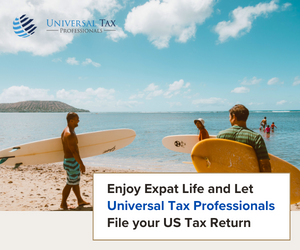Retire in Oslo Guide
Summary: Retire in Oslo with confidence, armed with the knowledge from our extensive guide. It covers critical considerations for retirees, from the cost of living and climate to housing, healthcare, and residency choices in Oslo. We also delve into the social and cultural scene, volunteering options, public transportation facilities, and the city's walkability, helping you make an informed decision.
Retiring in Oslo is a dream for many international retirees. The city offers a high standard of living, excellent healthcare, and a wealth of cultural and recreational activities. However, it also presents some challenges, such as a high cost of living and a cold climate. This article will explore what it's like to retire in Oslo, from the cost of living to the local culture.
Living Expenses in the Norwegian Capital
Oslo is one of the most expensive cities in the world. Housing, food, and transportation costs are high, but the quality of goods and services is also top-notch. However, retirees who have a good pension or savings can enjoy a comfortable lifestyle. It's also worth noting that Norway has a high minimum wage and strong social security benefits, which can help offset the high cost of living.
Oslo's Climate
Oslo has a humid continental climate, with warm summers and cold, snowy winters. The city is known for its beautiful winter landscapes, but the cold weather can be a challenge for some retirees. On the other hand, the summer months offer long days and mild temperatures, perfect for outdoor activities.
Healthcare Facilities
Oslo boasts some of the best healthcare facilities in the world. The city is home to several top-rated hospitals, including Oslo University Hospital and Rikshospitalet. These hospitals offer a wide range of medical services and have English-speaking staff.
Public Healthcare System
Norway has a universal healthcare system, which is accessible to all residents, including international retirees. However, it's important to note that there may be some out-of-pocket costs for certain services. Many retirees also choose to have private health insurance to cover these additional costs.
Residency Options
Retirees can apply for a residence permit in Norway, which allows them to live in the country for up to three years. After this period, they can apply for a permanent residence permit. However, the process can be complex and requires proof of sufficient income.
Outdoor Activities and Parks
Oslo is a paradise for nature lovers. The city is surrounded by forests, lakes, and mountains, offering endless opportunities for hiking, skiing, and fishing. There are also many beautiful parks in the city, such as Frogner Park and Vigeland Sculpture Park.
Local Cuisine and Restaurants
Oslo offers a diverse food scene, with restaurants serving everything from traditional Norwegian dishes to international cuisine. Some popular spots include Fiskeriet Youngstorget for seafood, Mamma Pizza for Italian, and Lofoten Fiskerestaurant for a fine dining experience.
Language Learning Opportunities
While most Norwegians speak English, learning Norwegian can enhance your retirement experience. There are several language schools in Oslo, such as Alfaskolen and Folkeuniversitetet, that offer Norwegian courses for adults.
Local Culture and Markets
Norwegians are known for their friendly and welcoming nature. Oslo has a vibrant cultural scene, with numerous museums, galleries, and music festivals. The city also has several markets, such as the Oslo Farmers' Market and the Christmas Market, where you can buy local produce and handicrafts.
Meeting People and Volunteering
There are many ways for retirees to meet people in Oslo, from joining local clubs to volunteering. The Red Cross and Salvation Army are always looking for volunteers, and there are also several expat groups in the city.
Housing Options
Most retirees in Oslo live in apartments, which are available in various sizes and price ranges. The city center is a popular choice due to its proximity to amenities, but there are also quieter neighborhoods in the outskirts.
Transportation
Oslo has an excellent public transportation system, including buses, trams, and ferries. The city is also very walkable, and many retirees find that they don't need a car. However, owning a car can be useful for trips outside the city.
In conclusion, retiring in Oslo can be a rewarding experience, offering a high quality of life, excellent healthcare, and a vibrant culture. However, it's important to be prepared for the high cost of living and the cold winters.
About the Author
 Betsy Burlingame is the Founder and President of Expat Exchange and is one of the Founders of Digital Nomad Exchange. She launched Expat Exchange in 1997 as her Master's thesis project at NYU. Prior to Expat Exchange, Betsy worked at AT&T in International
and Mass Market Marketing. She graduated from Ohio Wesleyan University
with a BA in International Business and German.
Betsy Burlingame is the Founder and President of Expat Exchange and is one of the Founders of Digital Nomad Exchange. She launched Expat Exchange in 1997 as her Master's thesis project at NYU. Prior to Expat Exchange, Betsy worked at AT&T in International
and Mass Market Marketing. She graduated from Ohio Wesleyan University
with a BA in International Business and German.
Some of Betsy's articles include 12 Best Places to Live in Portugal, 7 Best Places to Live in Panama and 12 Things to Know Before Moving to the Dominican Republic. Betsy loves to travel and spend time with her family. Connect with Betsy on LinkedIn.
Additional Information:





